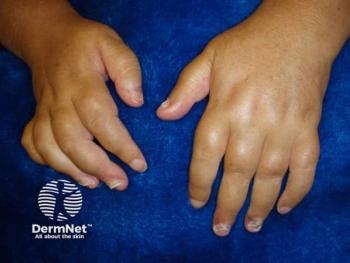
Baseline Characteristics of Patients With Generalized Pustular Psoriasis
Aaron S. Farberg, MD, and Jeffrey Crowley, MD, review the demographics of people with generalized pustular psoriasis including age, race, and comorbidities.
Episodes in this series

Aaron S. Farberg, MD: Dr Crowley, dive in and tell us a little about the baseline characteristics of this study.
Jeffrey Crowley, MD: This study is a little like finding a needle in a haystack. We have 48 million records and 1500 patients who have GPP [generalized pustular psoriasis]. We’re narrowing it down to the few who also have a flare. It shows how difficult it is to study these things, which aren’t seen very often. It’s important to get data because they’re mostly one-off. Most of our experience is with a few patients.
There are some key things with these demographics. First, there’s not much difference in the demographics in the patients with GPP and when GPP flares as far as these characteristics go. But there are a couple of things that are important overall to understand. One is that this disease is more common in women. Psoriasis, however, is pretty much equal in gender—about half women and half men. Here, we have two-thirds of patients are women. The other interesting thing is that patients get their flares a little later in life. More patients in their 40s and 50s have an onset of GPP vs psoriasis, which is usually in the 20s. That’s another major difference between psoriasis and GPP.
In terms of comorbidities, there are differences between the patients who flare and the patients with GPP. They have more comorbidities overall. If you look through all these things, they’re slightly higher with patients who are flaring, including things like diabetes and hypertension. All these are slightly higher, and they’re about 37% higher overall than the patients who aren’t flaring. We also look at other autoimmune diseases, which are more common in patients having GPP flares. These patients are messed up immunologically with other diseases. They’re more likely to have unstable GPP as well.
Transcript edited for clarity
Newsletter
Like what you’re reading? Subscribe to Dermatology Times for weekly updates on therapies, innovations, and real-world practice tips.





















